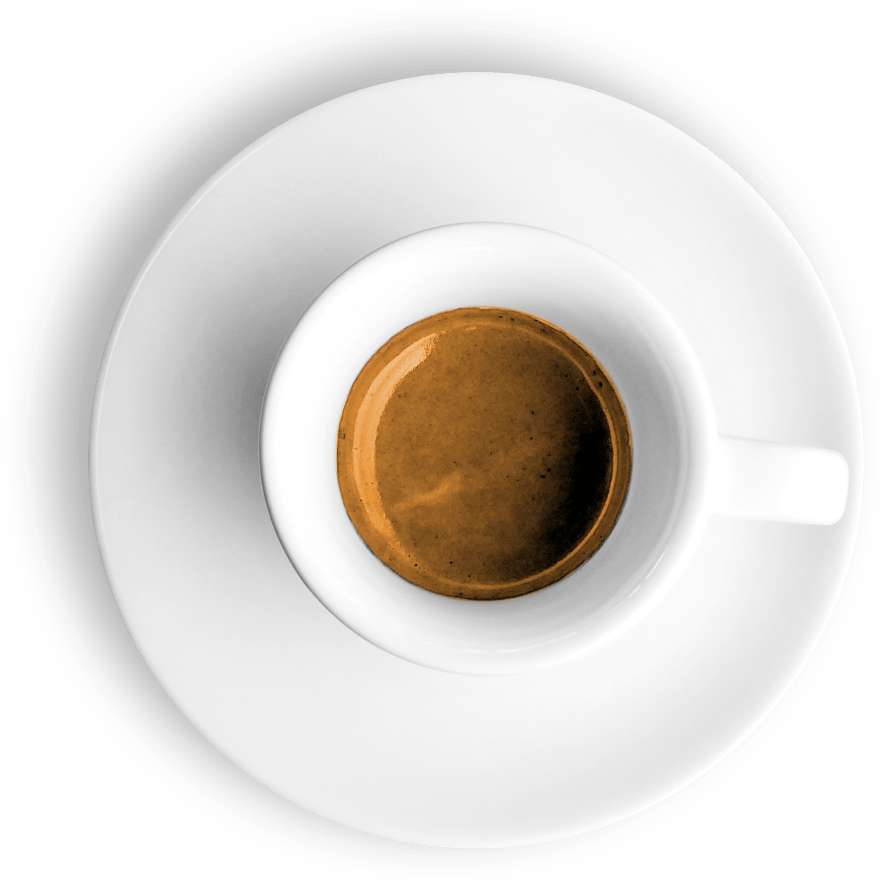
“Gaggia.
The brand that gave
coffee crema to the world.”
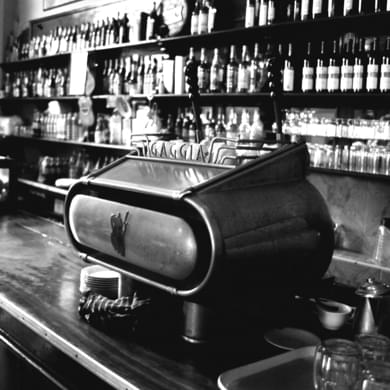
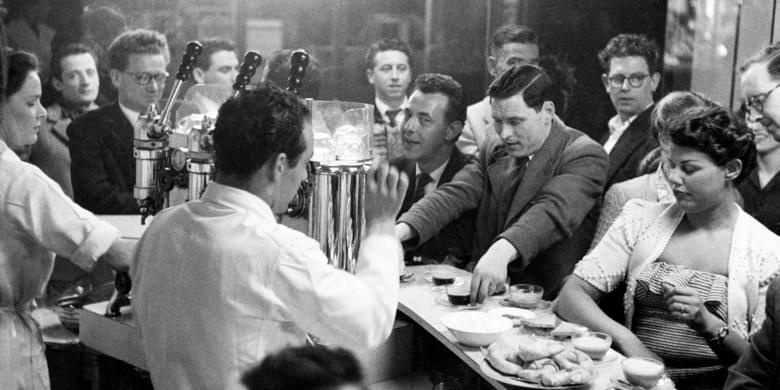
You know, the simple pleasures are the best things in life. That’s why, for some, coffee has become a tradition or even an obsession. For others, it’s a reason for living. "The mind is not a vase to fill, but a fire to light" said the Greek philosopher Plutarch: this sentence sums up Achille Gaggia’s attitude towards coffee. In fact, his great curiosity was an insatiable flame fed by the desire to create something beautiful, new and magnificent. Creating the perfect Italian espresso is a process that certainly requires patience, precision and practice, plus barista skills and experience. But don’t forget: rely only on the best equipment.
OUR HISTORY
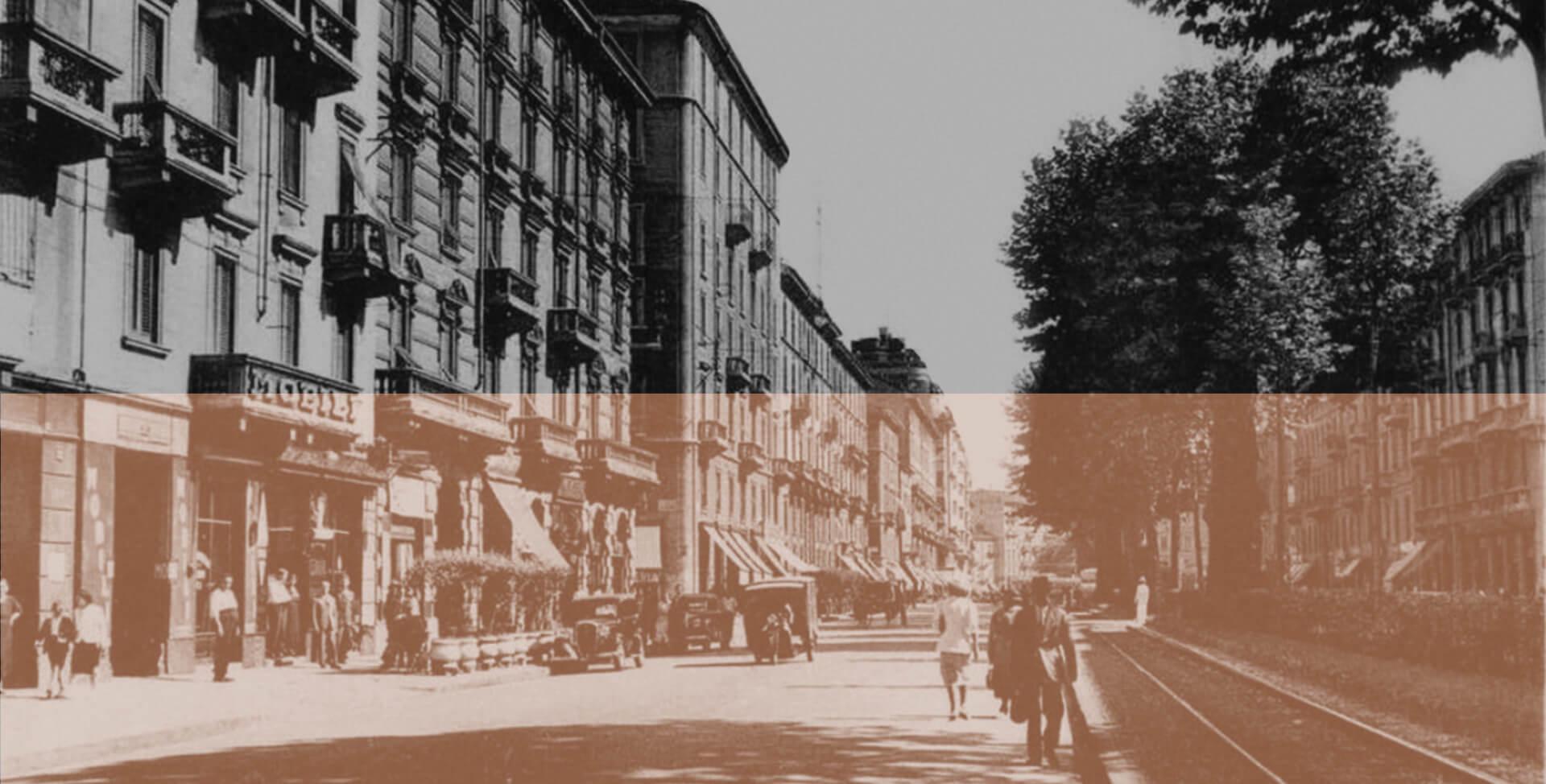
1930
ANIMA
Back to the beginning
It all started in Milan in 1930, when Giovanni Achille Gaggia (1895-1961) started work in the coffee bar run by his family and that bore his name, Caffè Achille, located at No. 14, Viale Premuda. At the beginning of the 1900s, coffee was prepared using a steam machine that did not guarantee excellent results as the coffee was often burned by the steam, which made it too bitter.
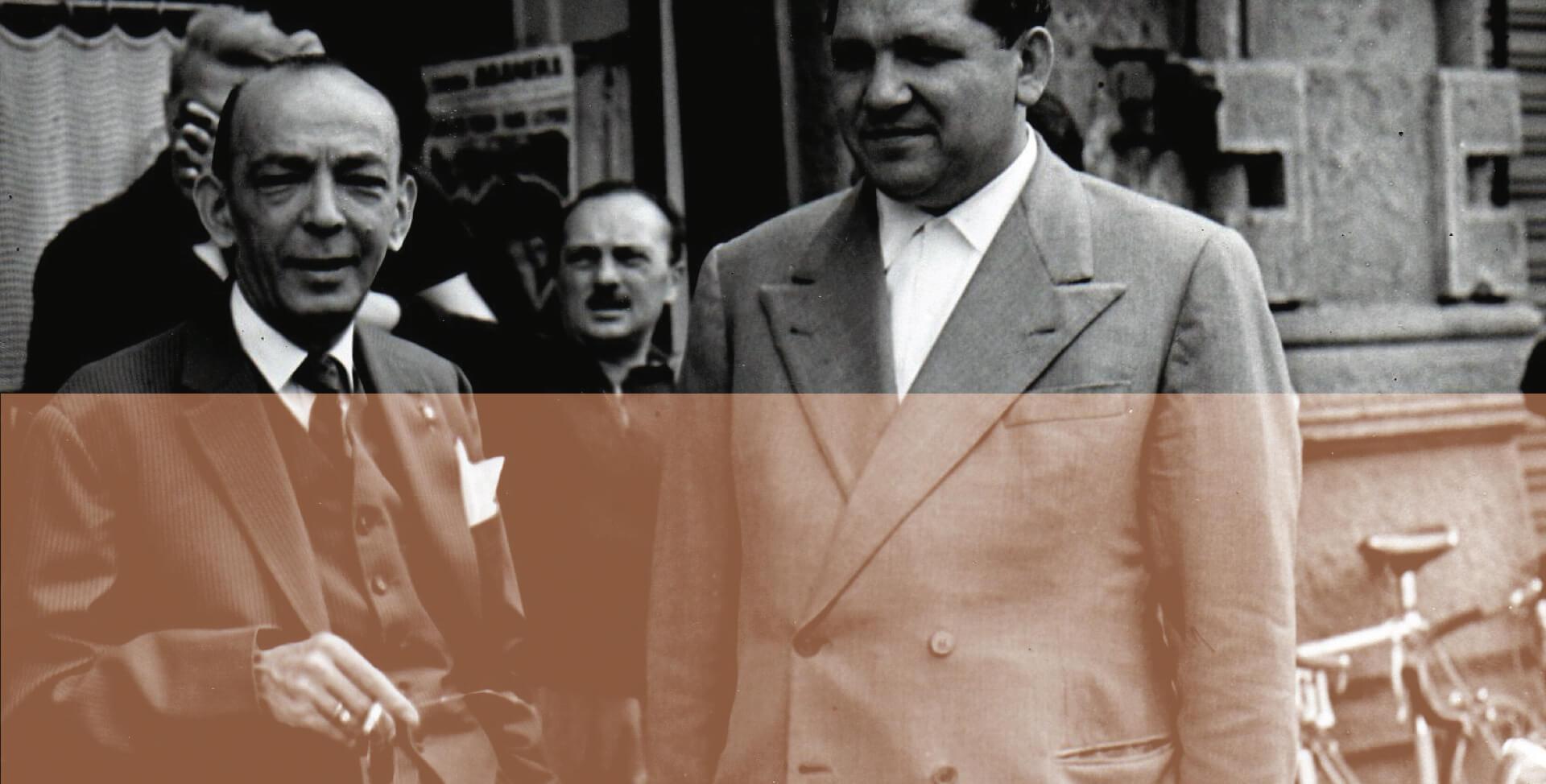
1938
CREMA
The birth of Italian espresso
On the 5th September 1938, Achille Gaggia filed patent No. 365726 for a steam-free coffee machine. Thanks to his revolutionary system, called 'Lampo', he was able to manage the entire process by which hot water under pressure passed through ground coffee: the espresso with a natural "crema" was born.
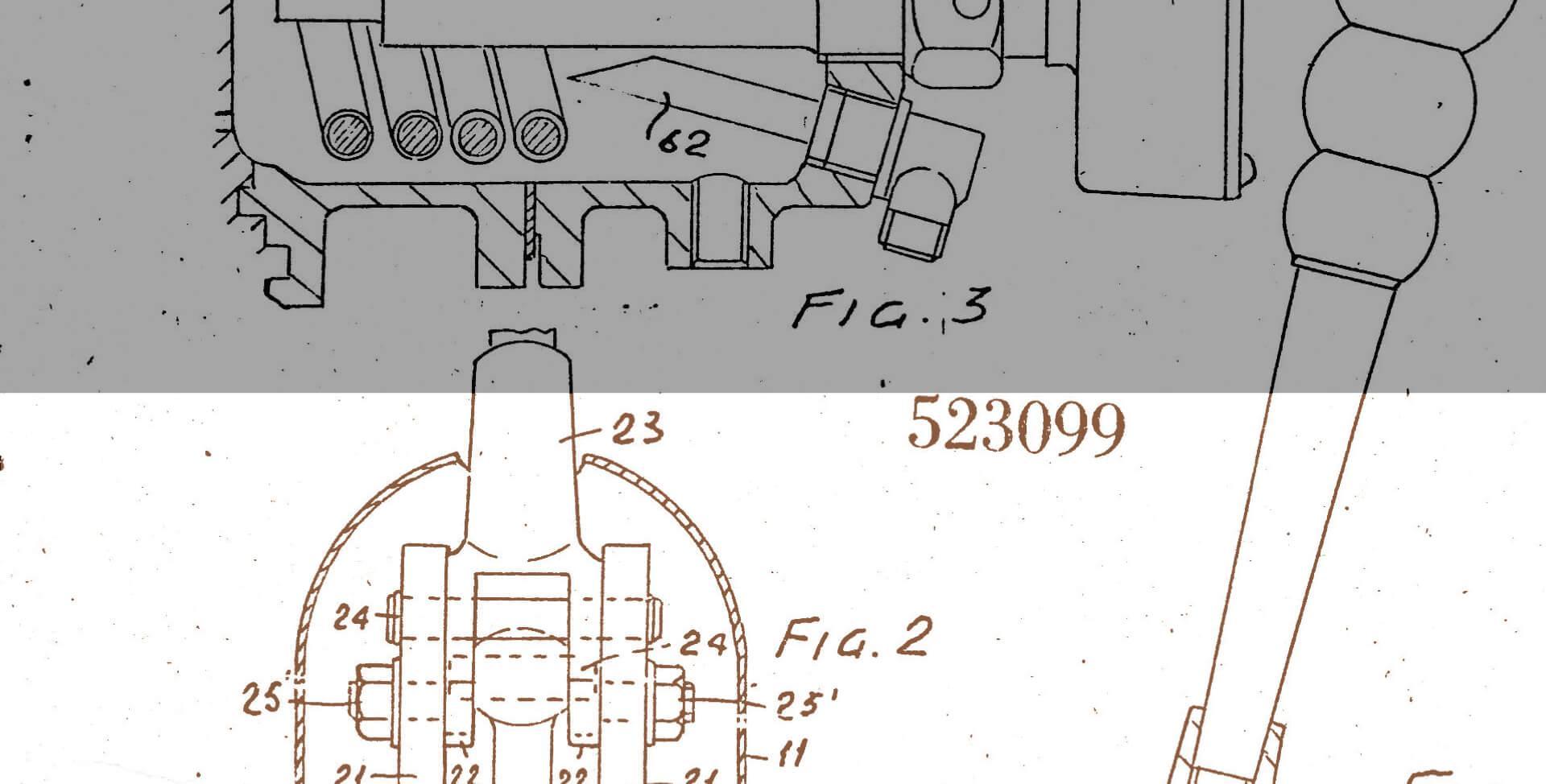
1947
ESSENZA
Innovative spirit
In 1947, the press mechanism was substituted by an ingenious mechanical trick, a large lever that allowed the achievement of pressure of 8-9 atmospheres. It became possible to extract the aromas that give the flavour of the coffee its fullness, producing the crema that is so typical of a cup of espresso.
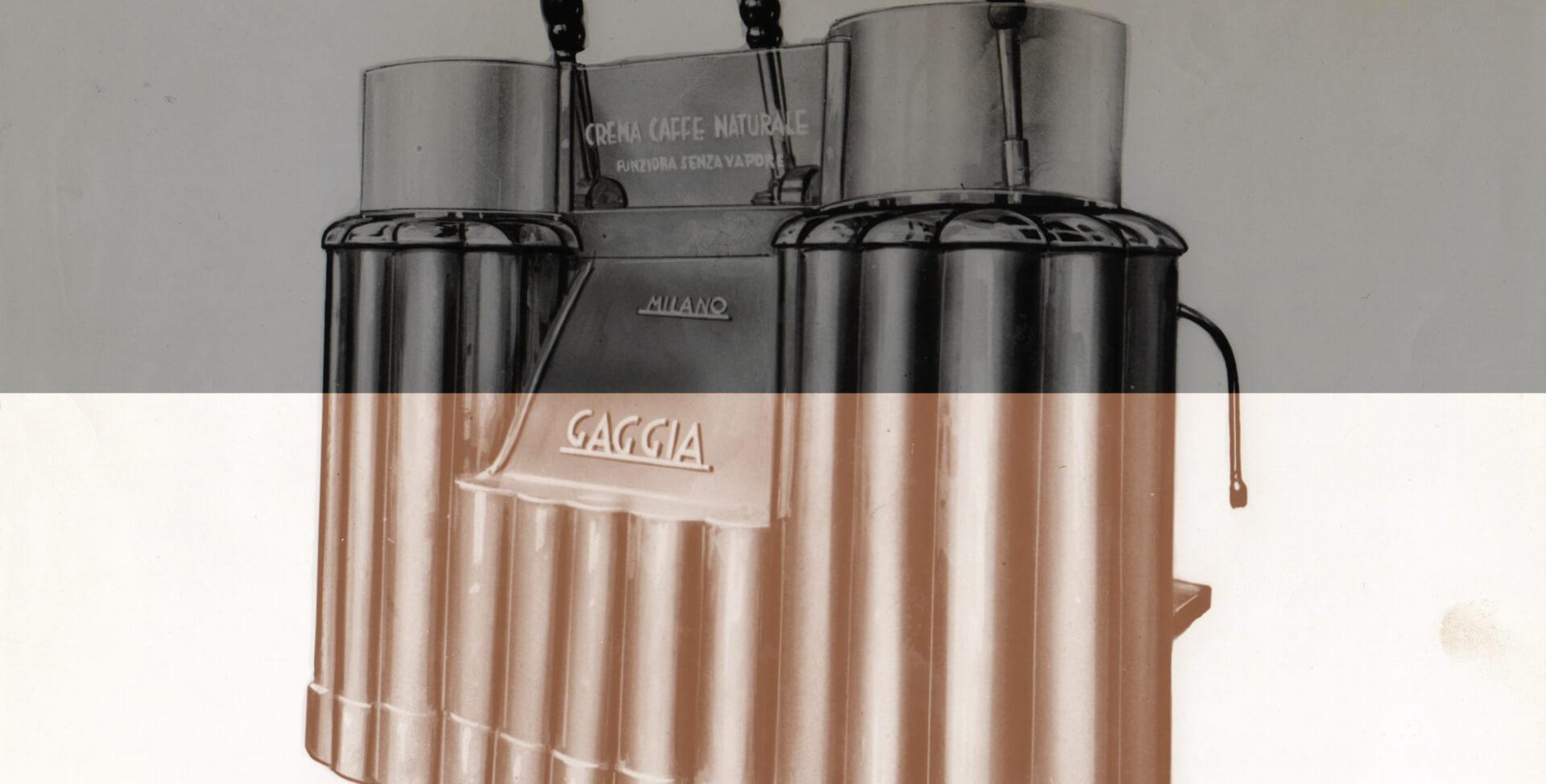
1948
CLASSICA
The first coffee machine
The Gaggia company was founded in Milan in 1948. Achille Gaggia showed customers a new way of enjoying coffee: his espresso was different to anything that had been sold in the past. And so, production of the first coffee machine for use in bars, the Classica, began. This model marked an important transition from the technological and aesthetic points of view: in fact, it is one of the first horizontal machines.
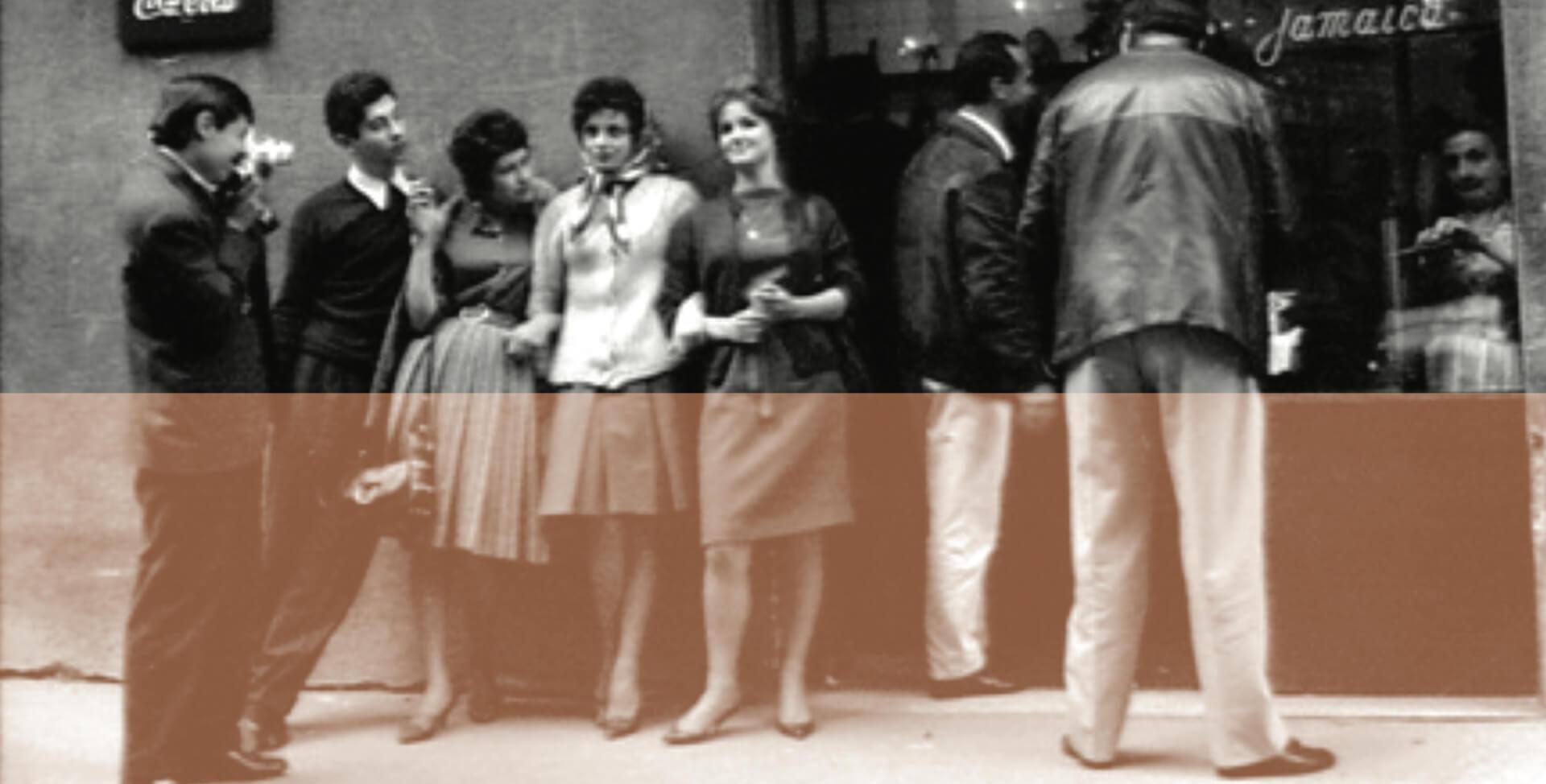
1949
PASSIONE
The espresso craze begins
Gaggia's machines were quickly installed by some of the most famous coffee bars in Milan such as Motta and Biffi, situated in the elegant Galleria Vittorio Emanuele. In just a few days, long queues started to form: it was as though the whole of Milan was lining up to try Gaggia’s natural coffee crema.
1950
ICONA
Italian creativity
Gaggia started producing two other machines for use in coffee bars. The innovative Esportazione model, which was ironically nicknamed 'the sardine tin' because of its unusual shape. Instead, the design of the Internazionale model evoked memories of the first rockets launched into space. Both machines feature rear-lit plexiglass bodywork which bears the words "Crema caffè naturale funziona senza vapore" (natural coffee crema works without steam).
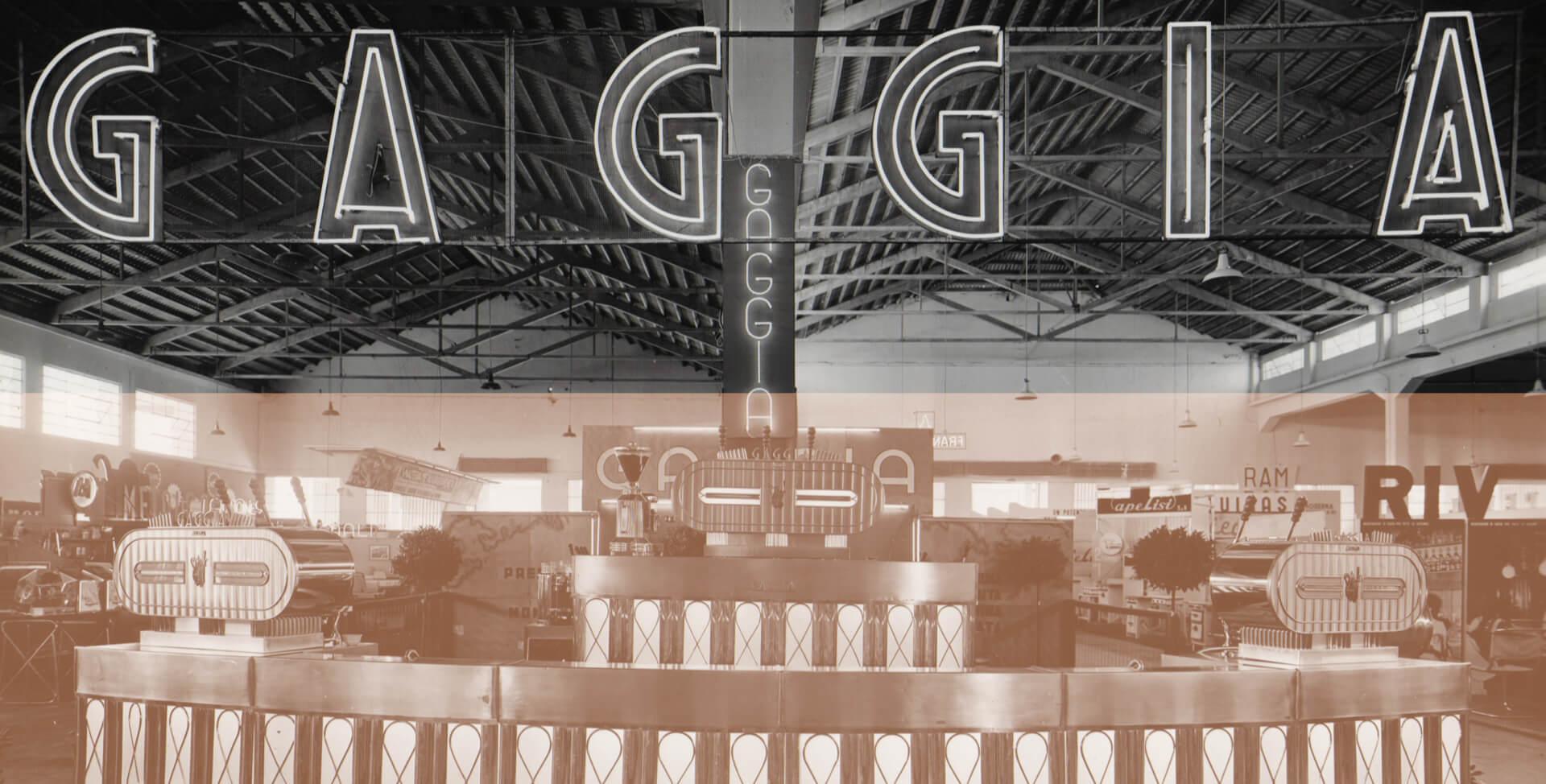
1952
BELLEZZA
A huge international success
The success of the company had been consolidated: with its iconic stand designs, Gaggia made a huge impression at the Milan Trade Fair and quickly garnered international appeal.
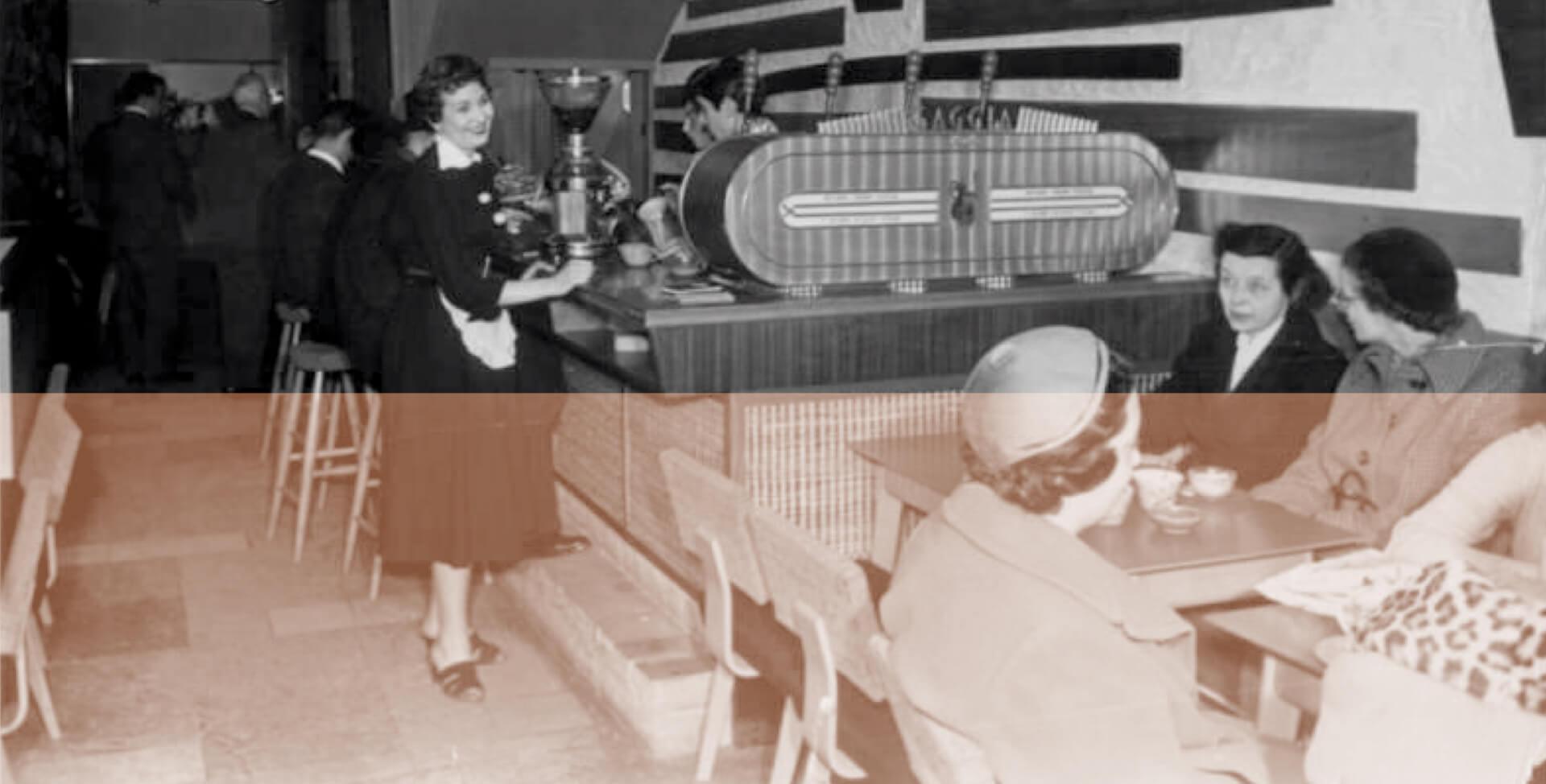
1953
DOLCE VITA
Espresso culture
By the mid-Fifties, the fashion of espresso had spread. Gaggia was the first Italian coffee machine to be imported into the United Kingdom: in 1953 the Italian actress Gina Lollobrigida opened Moka London's first coffee bar with a Gaggia machine. In just a few years, espresso became a real trend beyond the Italian borders and one that grew rapidly, closely linked to the chic associated with Italian style.
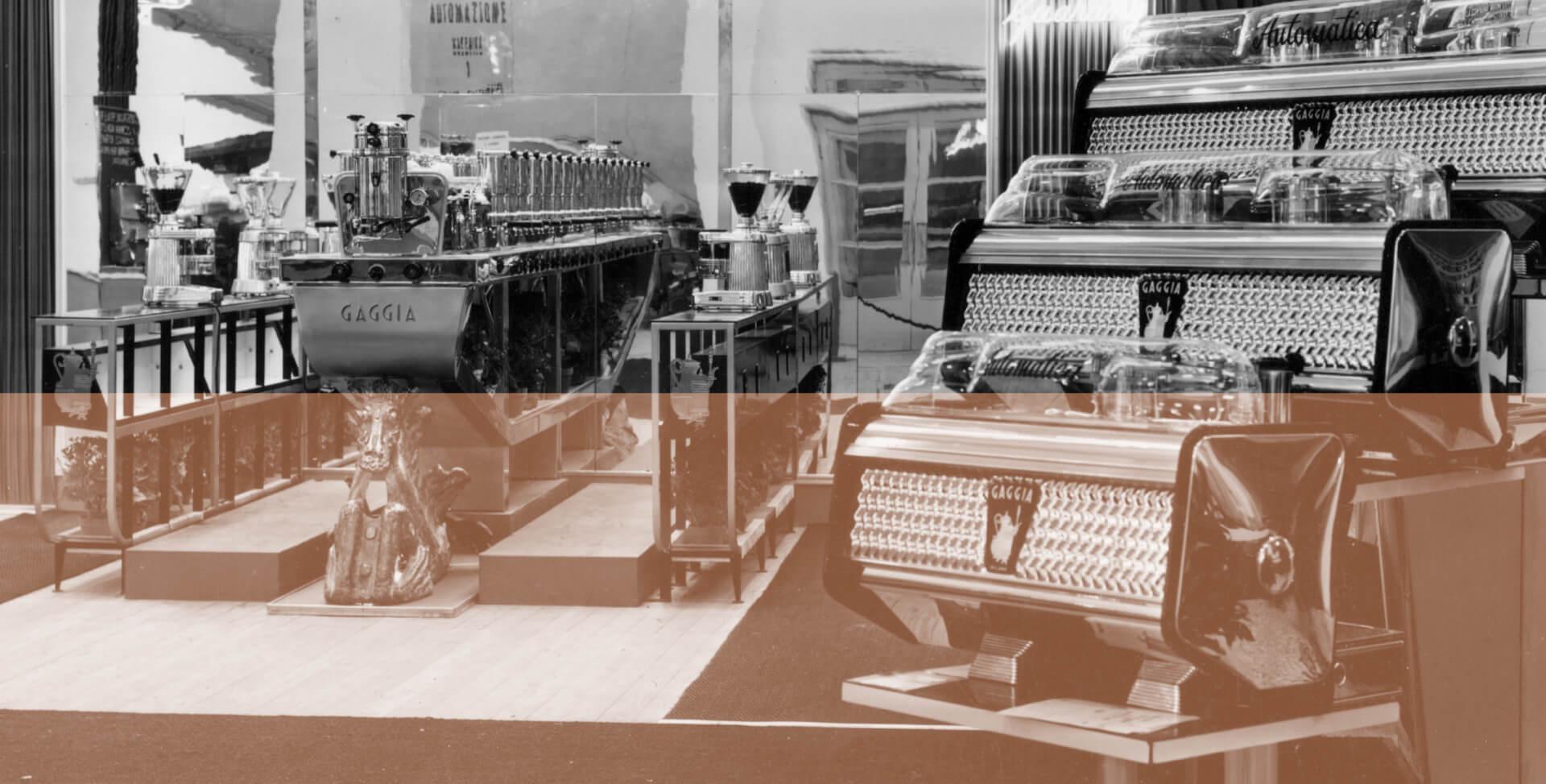
1957
CRESCENDO
Between Milan and Australia
The coffee bar machine Montecarlo, which was produced in Australia, represented the Italian brand in that country for over twenty years, contributing hugely to the spread of crema culture. At the same time (1957), the mass production of the America model began in Milan and it took the efficiency of the lever system to a new level. It was a resounding success with the public.

1960
MERAVIGLIA
Cutting-edge technology
Developed from America, the Autono-Matic model - which gradually replaced the lever models - had a number of innovations, including hydrothermal control of the boiler. The simple mechanism of the hydraulically operating groups - a real cutting-edge technical achievement - made it possible to produce one or two cups of coffee at the touch of a button. The next step in Gaggia production was the Orione series.
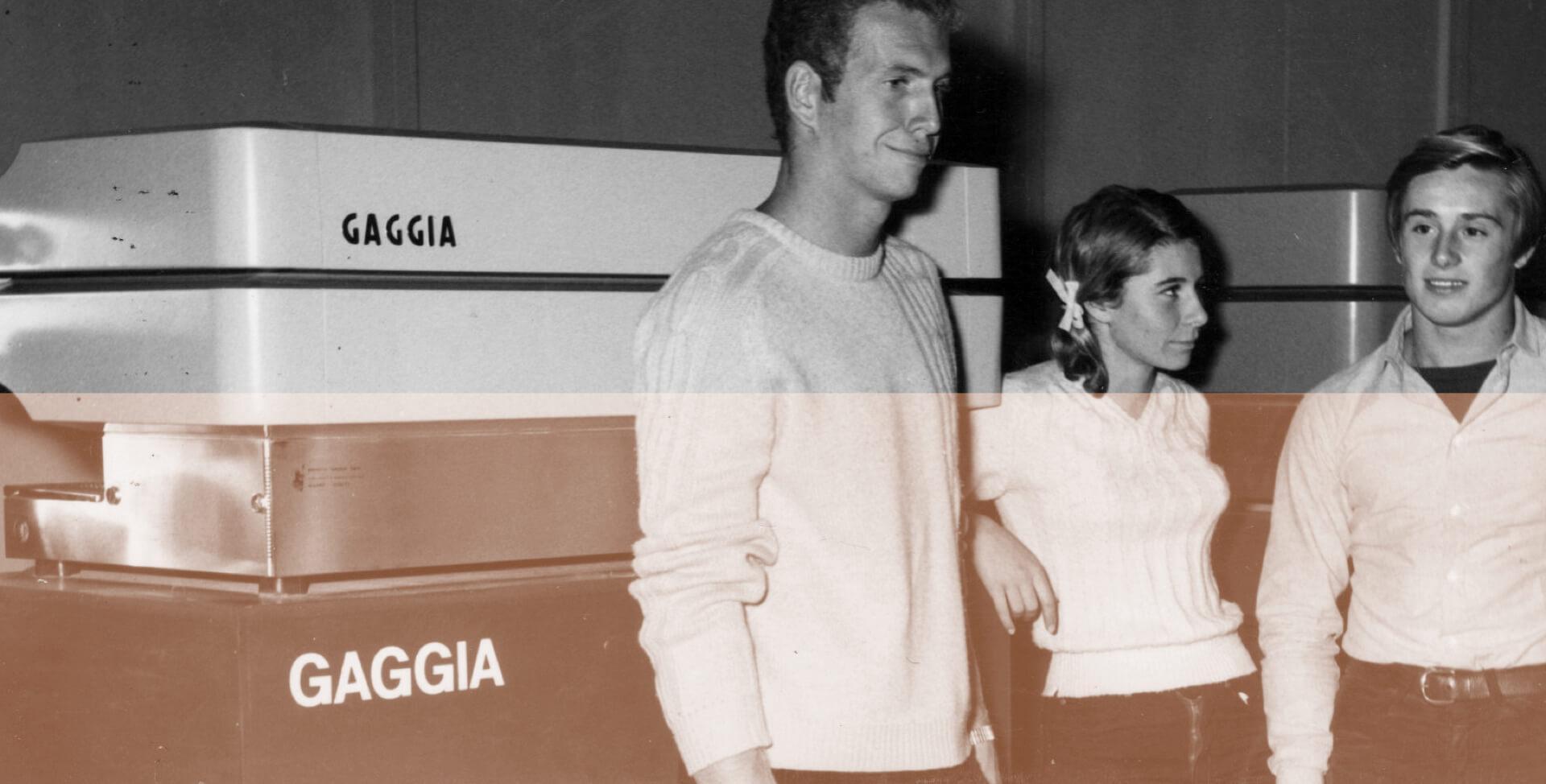
1970
IDEA
Pragmatic and practical
Achille Gaggia died prematurely in 1961. Management of the company passed down to his son, Camillo, and Armando Migliorini. The company they inherited had become the undisputed leader in the sector. Gaggia's first experience with designers occured in 1968, when architect Giuseppe De Gotzen devised the concept that became bar machine Tel 70. This machine was displayed at the 1968 Milan Fair, on the occasion of Gaggia's 20th anniversary.
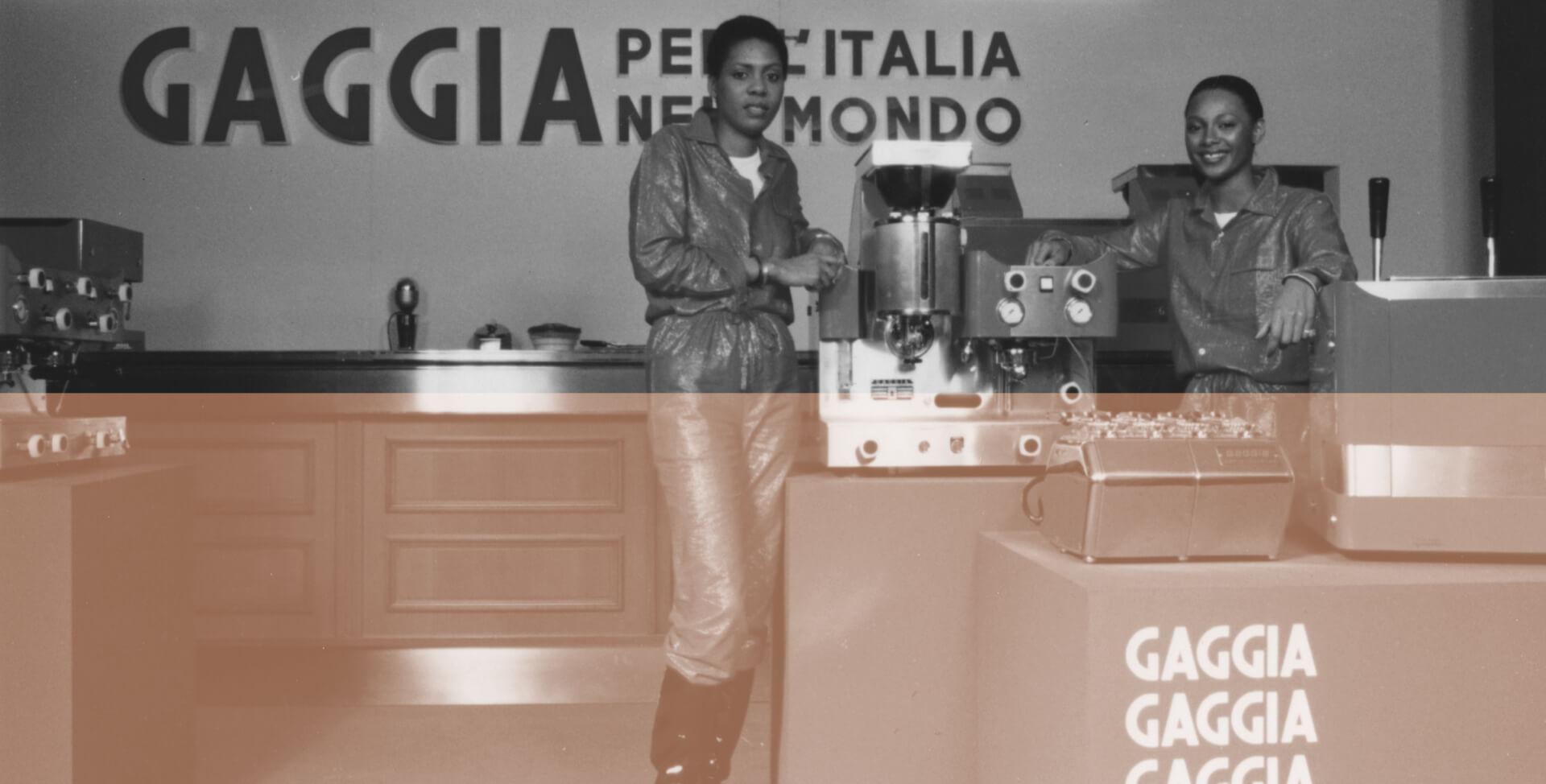
1980
SINFONIA
The colours of the 1980s
The next project, renamed Modello 80, had a number of original features and its lines were so typical of the 1960s. It was produced in a number of versions, offering a variety of extraction systems: an espresso group or a filter coffee group and reserve system.
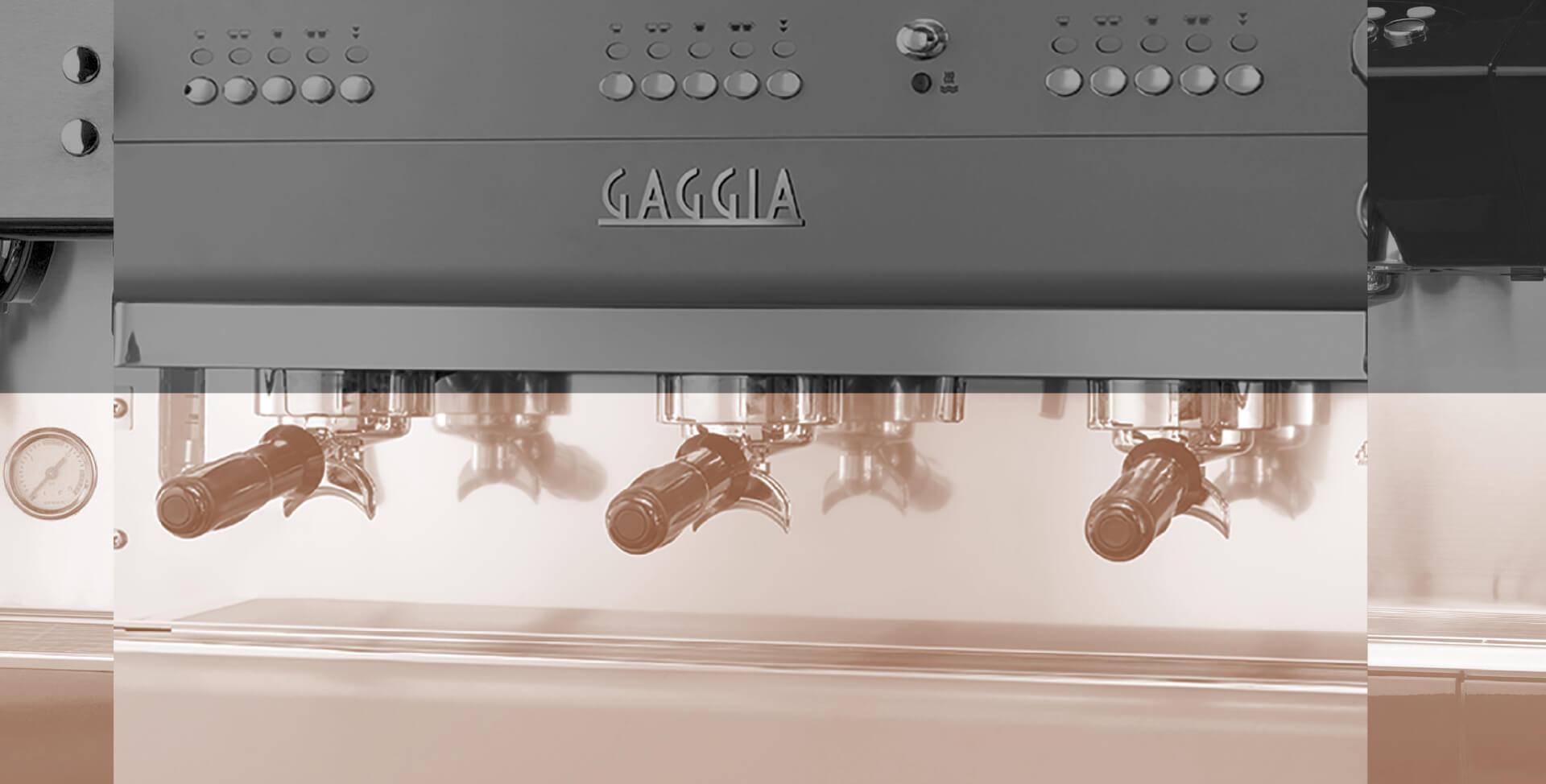
1990
TRADIZIONE
Towards the new millenium
From the 1990s to first decade of the 21st century, the Gaggia brand continued its tradition of producing professional coffee machines for cafeterias, such as the timeless Deco Evo, with its vintage design.
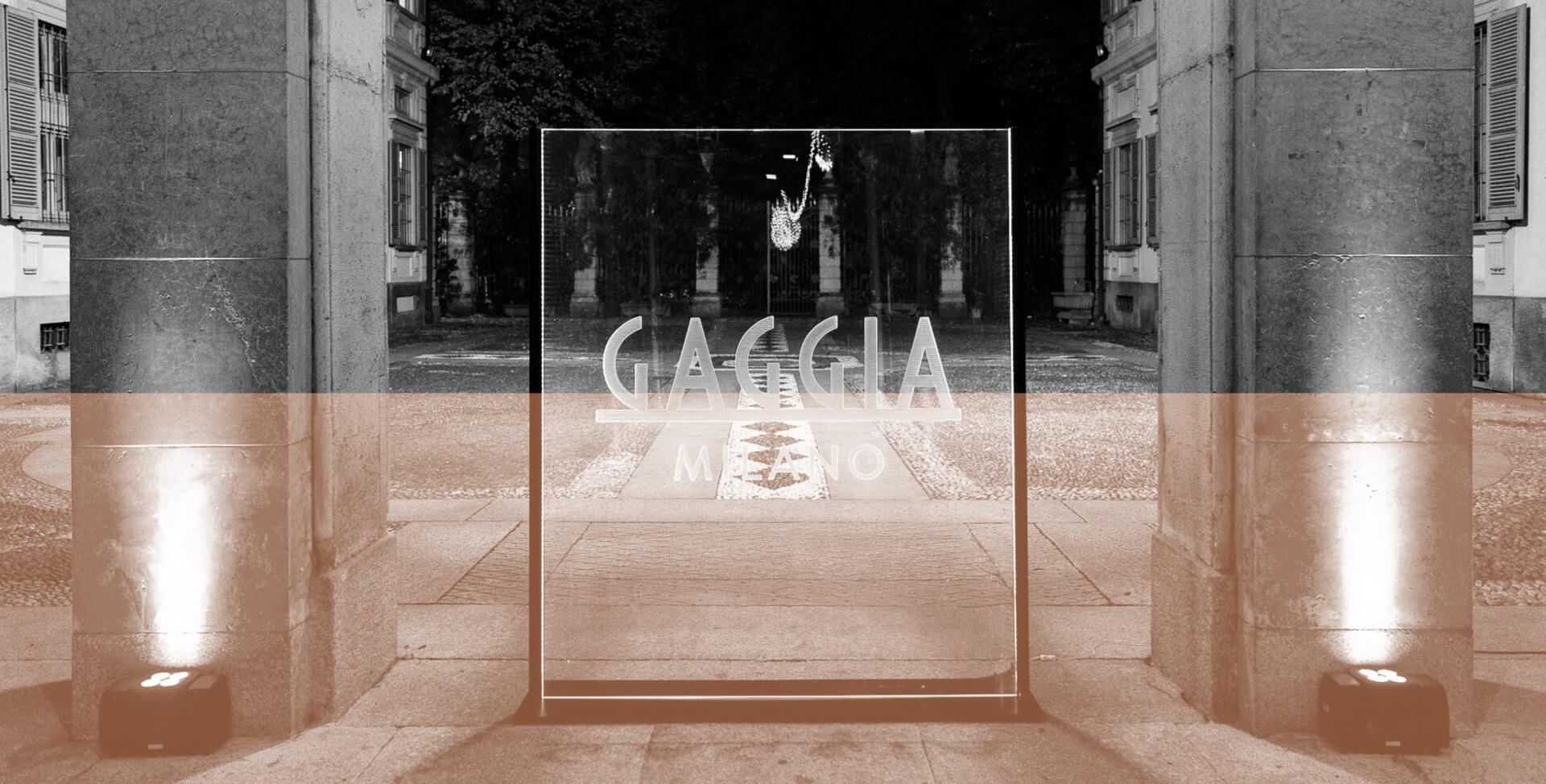
2018
RINASCIMENTO
A new chapter
Evoca Group acquired the professional branch of the Gaggia brand to reinforce its position in the Horeca market. The takeover centred on a re-launch 80 years after Achille’s revolutionary invention and today the Gaggia brand is celebrating its rebirth with La Reale, a new traditional, coffee machine that was developed in collaboration with the Bonetto Design Center. La Reale is a scenographic model that re-interprets the best aesthetics of historic Gaggia models in accordance with contemporary taste.
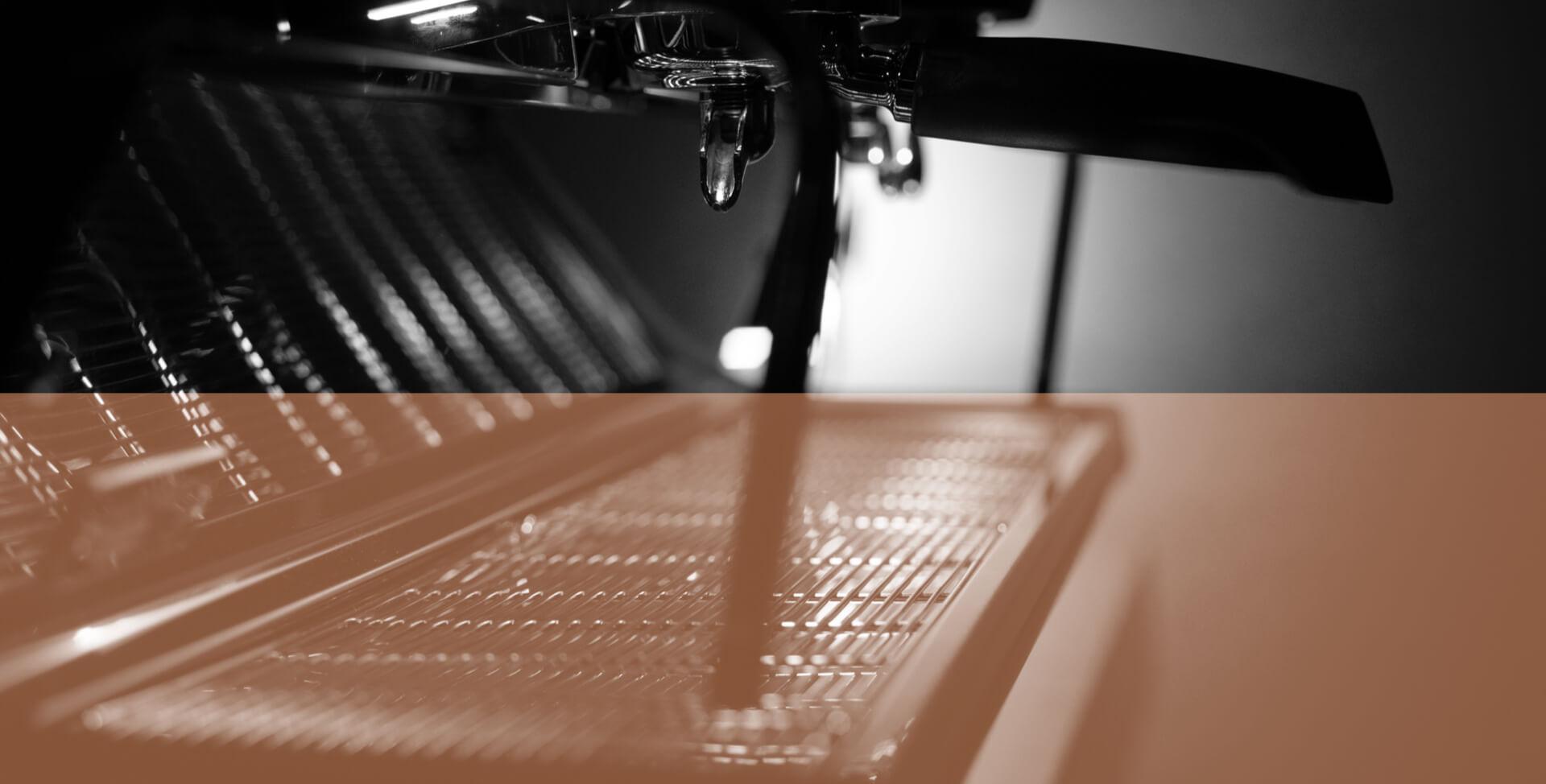
2019
EVOLUZIONE
Back to the future
The task of writing the next exciting chapter in the history of Gaggia Milano has been assigned to a completely new machine range, which includes among the others the very first fully automatic machines by Gaggia Milano, La Radiosa. This is because the future belongs only to those who are sufficiently tenacious to believe in the beauty of their dreams and see them through to the end.

